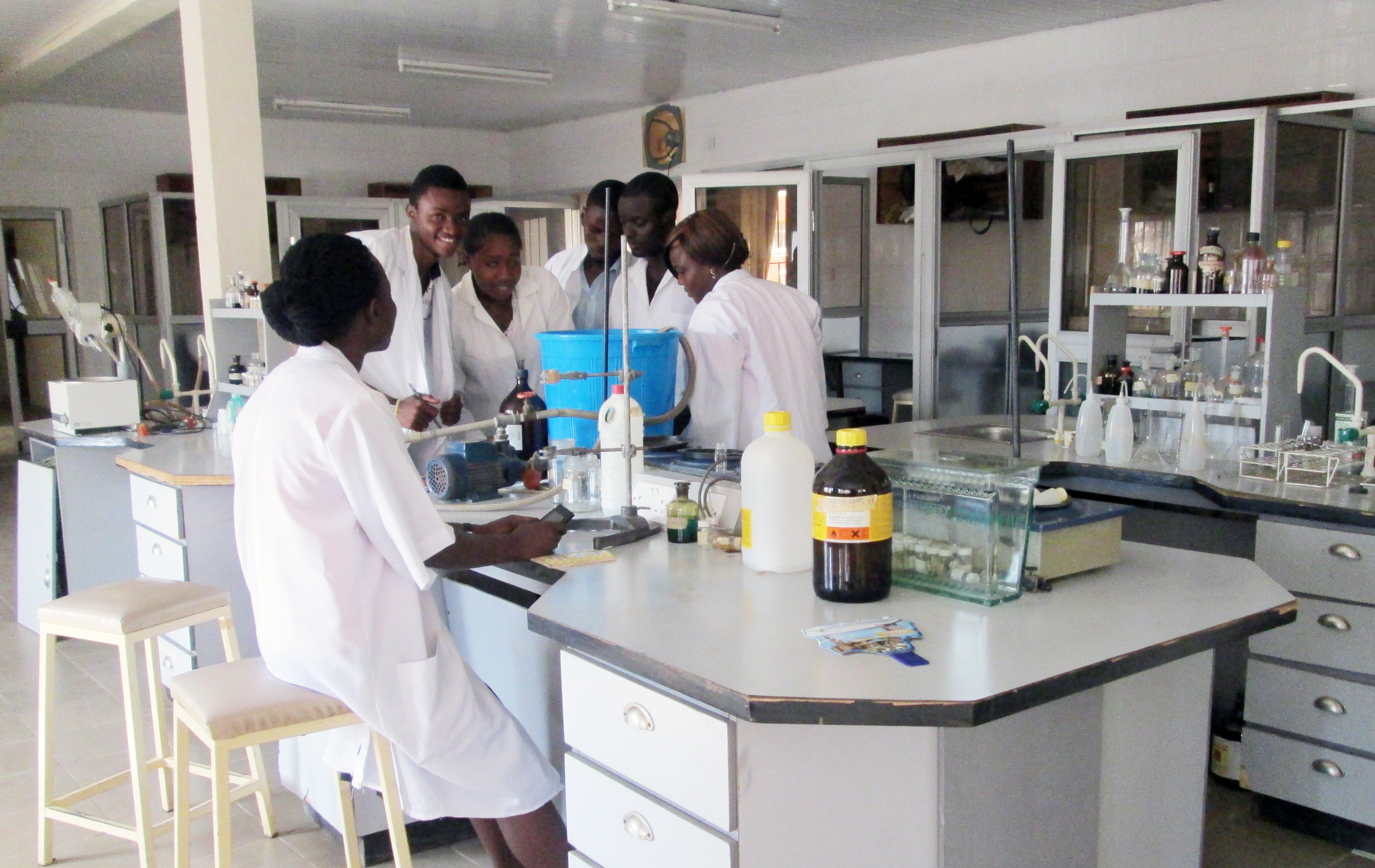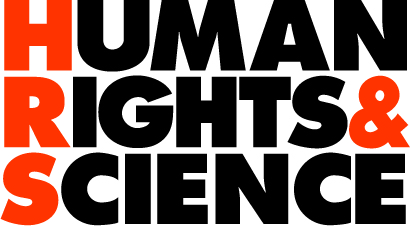Laboratory management workshops
Enabling high standard & self-sustained Scientific laboratories
Introduction
Human Rights & Science (HR&S) recognises researchers, innovators, and entrepreneurs in lower-income countries who present amazing social business ideas and support them. Our main aim is to implement locally developed and locally adapted solutions. We address the context of scientific researchers and technicians with the purpose of facilitating an enabling environment.
Targeted audience
HR&S laboratory management workshops bring together:
- Scientific researchers.
- Technicians.
- Scientific institution management.
- Suppliers & manufacturers of scientific equipment.
- Users of scientific findings, innovators, social entrepreneurs from Sub-Sahara Africa.
We target stakeholders involved with:
- Procuring new equipment.
- Managing and using equipment already procured.
- The aspect of service and maintenance.
- Repair.
- The aspect of laboratory sustainable economy.
for lectures and discussions with the aim of providing opportunities for them to bring positive change and development. We offer a transformational training package designed to inspire stakeholders to become innovative change-makers.
Structure of the training
HR&S pieces of training are structured around evaluation planning. Evaluation planning describes how we monitor and evaluate the way we address our activities, as well as how we intend to use evaluation results for activity improvement and decision making. HR&S benefits from our own “Real-time Outcome Planning & Evaluation” tool (ROPE) and the training sessions are structured around the ROPE Strategy for Change template. It is obvious from the above that ROPE is an iterative process and that the Strategy for Change is continuously revised, as a result of lessons learned.
The set-up is two-fold; each researcher/technician’s own career and work-plan ambitions combined with the ambitions of the management of the institution where the researcher / technician works.
HR&S pieces of training are instructor-led and delivered by using a blended learning approach. It combines presentations, guided sessions of practical exercise, group work, and homework. Our facilitators are seasoned experts with years of experience, working as professionals and trainers in these fields.
Targeted Audience
The pieces of training target three categories of audience
- Technicians (and researchers) active in a laboratory.
- Laboratory management that is preparing for the procurement of advanced pieces of equipment.
- Institution management that is setting up an independent laboratory unit.
Output
- One Output from the pieces of training is a ROPE Strategy for Change sheet.
The SfC sheet supports the development work of the participants/institution directly after the training is completed. - Upon successful completion of the training and individual presentation, participants will be issued with a certificate.
Expected Outcome
Increased number of:
- Functioning advanced scientific equipment.
- Access to consumables.
- Income to the university through laboratory work.

Topics
HR&S offers Laboratory Management workshops and coaching with the aim to support scientific institutions and laboratories with selection, transportation, installation, calibration, operation, maintenance, servicing, use, and decommissioning of advanced scientific equipment.
The coaching service is offered in the form of support packages targeting: i) equipment procurement and delivery, ii) equipment management, iii) construction of laboratories and iv) operational & financial plan development.
Access to
- Well-functioning advanced scientific equipment.
Knowledge about
- Laboratory management.
For example: Preventive maintenance of laboratory equipment, strategies to ensure repair, strategies to develop and implement an occupational health and safety programme, designing a tool for stock taking, record & keeping, selecting analytical methods when procuring new pieces of equipment, link to a network of technicians for knowledge sharing around analytical mentods validation & development, as well as chemometrics, transfer of laboratory skills, strategy for change in laboratories and research & development.
Coordination around
- Selection of the most suitable piece of equipment to procure.
- Service and maintenance of scientific equipment.
- Central laboratories.
Empowering
- Teamwork.
- Net-working.
- Knowledge-sharing.
- Time-management.
Strengthening institutional capacity
- Strategy for change.
- Sustainable economy.
- Accounting.
- Stakeholder analysis.
- Evaluation planning.
- Service and maintenance of scientific equipment.
Sharing about Practical strategies
- Ethical and management principles.
- Trust, transparency, and accountability.
- Cross-cultural understanding.
- Real-time outcome planning and evaluation.
- Physical infrastructure, financial support, coaching.
- Testing the strength of scientific evidence for impact.
Action Areas
- RISE Support Centres.
- Investment capital loans.
- Accountability management.
- Branding & Public relations.
- Motivation.
- Social enterprise management.
- Impact assessment.
Programme – Annual Training event
1. One-hour introduction with HR&S RISE Centres.
The Strategy for Change (SfC) template is distributed.
2. Nine-hour online training with HR&S Sweden – three days.
Each participant develops their own individual SfC. Participants are encouraged to ask questions and discuss their own situations.
3. Two-hour examination with HR&S RISE Centres.
Each participant presents her/his own SfC for five minutes.
Workshop evaluation.
Distribution of Certificates.
Agenda
Day ONE – Introduction
Day TWO
¤Access to Functioning Advanced Scientific equipment (FAST)
¤About change – how, why and who; HR&S Strategy for Change (SfC). ROPE.
¤Ambition, Outcome challenges, Activities, Output, Milestones (home-work).
¨Day THREE
¤FAST Implementation strategies. A. Equipment procurement and delivery. B. Equipment management.
C. Construction of laboratories. D. Operational & Financial plan development.
¤Input, Outcome & Progress Markers (home-work).
¤Transition from Aid dependency.
¨Day FOUR
¤O&F Plans
¤Stakeholder analysis.
¤Impact, Concluding SfC charts (home-work).
¨Day FIVE – Presentation of individual SfC.
Functioning Advanced Scientific Equipment (FAST)
O&F Plans
The FAST Operational and Financial plans (O&F plans) are necessary and complementary procedures. The O&F plans offer the Target Partner Institution a strategy on how to i) prepare prior to procuring new pieces of equipment and ii) after procurement procedures.
- The Target Partner Institutions are responsible for the development and implementation of the Operational and Financial plans (O&F plan).
- The plans should be annually reviewed, lessons learned compiled and informed decisions taken.
- The Target partner is eligible for training and coaching on the O&F plans by HR&S.
The Operational plan Guidelines were developed to support scientific institutions with the procurement and use of advanced scientific equipment. The intention is that an operation plan shall be developed prior to procuring a new piece of advanced equipment. Thus each piece of equipment shall benefit from its own operational plan. The plan shall be filled in jointly by the institutional management, the researchers, and the technologists/technicians together. A separate document is generated for each piece of equipment. Certain activities compiled in the operational plan, obviously come with cost implications. Moreover, the FAST Concept is based on the principle of a sustainable economy. Thus the operational costs for starting up a new piece of equipment necessarily have to be covered by investment capital, but after about two years the piece of equipment is expected to cover its own running costs as well as, whenever possible, generate a profit which can strengthen the laboratory or the research in general. A FAST Financial plan Guideline has thus been developed to be complementary to the FAST Operational plan Guideline. The purpose of the financial plan is to prepare a strategy for the Institution to cover all the expenses that come with the running, maintenance, and servicing of new or repaired pieces of equipment. The financial plan compiles estimated costs as well as sources of funding. The cost recovery plan shows how costs related to procured or repaired equipment can be covered, and proposes options of funding sources.
Operational Plan
The purpose of the FAST Operational Plan is to offer a practical strategy for the management of i) advanced scientific equipment as well as ii) laboratories with advanced scientific equipment. The strategy is holistic and addresses; selection, procurement, delivery, installation, calibration, operation, maintenance, servicing, accreditation, use, and decommissioning of advanced scientific equipment. FAST targets Scientific Institutions and the concept builds on that an Operation plan is developed prior to procuring a new piece of advanced equipment. Each piece of equipment shall benefit from its own operational plan. The Operational Plan is to be developed jointly by; the institutional management, the researchers, and the technicians. The Vice-Chancellor/Director, one representative from the researchers and one from the technicians, prior to procurement, shall sign the final version of version the Operational plan, prior to that the order of a new piece of equipment is placed. It is the responsibility of the Scientific Institution to ensure that all aspects of the operational plan implemented. The Operational plan addresses:
- Stakeholder committees.
- Selection of research topics.
- Selection of equipment to be repaired or improved.
- Selection of equipment to be procured.
- Selection of supplier.
- Timely release of funds.
- Laboratory facilities.
- Equipment protection.
- Occupational health & safety and natural environment protection.
- Ensuring that the laboratories are prepared.
- On-site item delivery.
- Quality assurance.
- Equipment use.
- Repair and maintenance.
- Decommissioning procedures.
- Technician forum.
- Training events.
- Technician career promotion.
- Equipment monitoring.
- Outcome planning & evaluation.
- Revenue generation.

Financial plan
The FAST Concept is based on the principle of a Sustainable economy. The purpose of the FAST Financial plan is to facilitate the process of developing a strategy of Sustainable economy at a laboratory. The Financial plan facilitates the estimation of the costs related to the running, maintenance and servicing of advanced scientific equipment, as well as, compiles potential sources of income. The FAST Financial plan has been developed to be complementary to the FAST Operational plan. The FAST Operational plan compiles the activities related to the equipment (please find a presentation of the FAST Operational plan elsewhere). The FAST Financial plan has been developed to serve the financial staff within Scientific Institutions. The Financial staff shall collaborate with researchers and technicians to understand the needs of a laboratory. The final version of the FAST Financial plan shall be signed by the Vice-Chancellor/Director of the Scientific Institution, the Director of the financial department, one representative of the researchers and one representative of the technicians.
Method
The procurement of a new piece of advanced equipment obviously requires financial investment. The Sustainable economy idea of FAST is that the costs related to the running of the piece of equipment during the two first years shall also be covered by the initial financial investment. After two years, the running costs shall be covered by the income generated through selling services based on that same piece of equipment. If the piece of equipment can even generate a profit, then it can possibly re-pay the initial investment capital, and there-after contribute to the investment capital of other pieces of equipment.
The FAST programme is most useful in a Central laboratory context, where the costs and income can be shared among a larger pool of equipment. A Central laboratory can be viewed as a social enterprise. Thus, the financial planning and management of the FAST programme borrow concepts from the private sector; the business idea, business plan, financial reporting, bookkeeping and auditing. The FAST Central laboratories shall have their own financial staff, bank accountant and external auditors. Furthermore, a Central laboratory has the potential to become a Centre of excellence for the region or the country.
The financial estimations shall be done prior to placing an order for a new piece of equipment. Two years of running costs must be set aside from the funds available for procuring new pieces of equipment.
Annual Training package
Each workshop series starts with an introduction at an HR&S RISE Centre, continues with nine hours over a period of three days, online workshops managed from HR&S Sweden and ends with presentation by each participant at the HR&S RISE Centres.
Participants receives homework to be addresses in-between the online sessions. Each participant prepares a presentation to share during the last session. Good presentations are rewarded with certificates.
Accreditation
Upon successful completion of the training, participants will be issued with a certificate.
Attendance
Delegates should be proficient in English.
Each course attracts 20 participants.
Eligibility
- Technicians, researchers and management connected to scientific institutions.
- Suppliers & manufacturers of scientific equipment.
- Laboratory staff.
- Institutions in charge of equipment procurement.

Date & venue
The workshop series is repeated annually last week of March.
Dates in 2021 was 29th March to 2nd April 2021.
Time of the day was
29 March: 2-3 pm East African Time (EAT)
30, 31 March and 1 April 2-5 pm East African Time (EAT); 12noon-3 Central European Time (CET)
2 April: 2-3.30 pm East African Time (EAT).
The event was hosted by HR&S RISE Uganda.
Price & payment
The fee for attending a workshop series of five sessions is EUR 10 per participant or EUR 100 per institution. It can be recommended and expected that an institution pays for its employed technicians.
tailor-made Trainings
Our tailor-made trainings are designed according to the request by the customer. The trainings are ususlly centered around webinars from Sweden, plus introduction and examination.
Among the different options are:
- The training can address research management or laboratory management, or both.
- The training can be in the format of seminars, or workshops or both.
- It may start with an introduction at an HR&S RISE Centre and end with presentation by each participant at the HR&S RISE Centres, or one of these options or none.
- It can contain a certain amount of information combined with a test, and then generate a certificate for the participansts that manage the requirements.
- It can be held condenced during one week, or be spread out over a period of maximum three months.
- The number of webinars can range between five up to twenty. Each shall be one, two, three or four hours. Participants receives homework to be addresses in-between the online sessions.
Accreditation
Upon successful completion of the training and presentation, institutions and/or individual participants will be issued with a certificate.
Attendance
Delegates should be proficient in English.
Each course preferably attracts around 20 participants.
Eligibility
- Technicians, researchers and management connected to scentific institutions.
- Suppliers & manufacturers of scientific equipment.
- Laboratory staff.
- Institutions in charge of equopment procurement.

Venue
The workshops will be held online and possibly partly on-site at our HR&S RISE Centres.
Price & payment
The cost for tailor-made training is agreed on from case to case. The institution pays on average EUR 5,000 for ten hours of training, introduction and examination.
